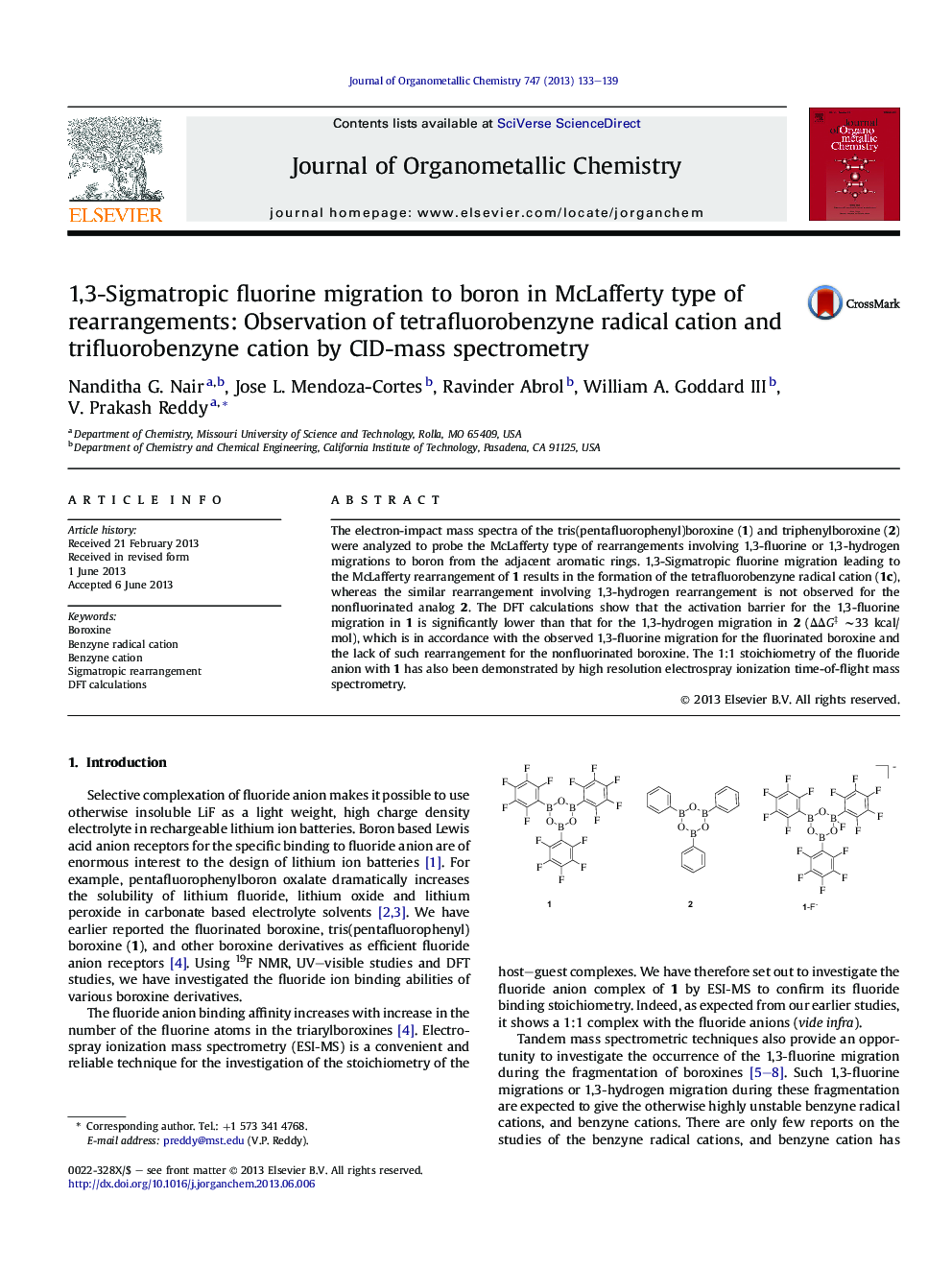| کد مقاله | کد نشریه | سال انتشار | مقاله انگلیسی | نسخه تمام متن |
|---|---|---|---|---|
| 1323680 | 1499893 | 2013 | 7 صفحه PDF | دانلود رایگان |

• First 1,3-sigmatropic fluorine migration leading to the McLafferty type of rearrangement.
• High resolution mass spectrum for the fluoride–boroxine complex.
• CID mass spectrometry of tetrafluorobenzyne radical cation.
• DFT calculations of activation barriers for the sigmatropic rearrangements.
The electron-impact mass spectra of the tris(pentafluorophenyl)boroxine (1) and triphenylboroxine (2) were analyzed to probe the McLafferty type of rearrangements involving 1,3-fluorine or 1,3-hydrogen migrations to boron from the adjacent aromatic rings. 1,3-Sigmatropic fluorine migration leading to the McLafferty rearrangement of 1 results in the formation of the tetrafluorobenzyne radical cation (1c), whereas the similar rearrangement involving 1,3-hydrogen rearrangement is not observed for the nonfluorinated analog 2. The DFT calculations show that the activation barrier for the 1,3-fluorine migration in 1 is significantly lower than that for the 1,3-hydrogen migration in 2 (ΔΔG‡ ∼33 kcal/mol), which is in accordance with the observed 1,3-fluorine migration for the fluorinated boroxine and the lack of such rearrangement for the nonfluorinated boroxine. The 1:1 stoichiometry of the fluoride anion with 1 has also been demonstrated by high resolution electrospray ionization time-of-flight mass spectrometry.
The 1,3-sigmatropic fluorine migration leading to the McLafferty rearrangement of tris(pentafluorophenyl)boroxine 1 results in the formation of the tetrafluorobenzyne radical cation 1c, whereas similar rearrangement involving 1,3-hydrogen rearrangement is not observed for the nonfluorinated analog, triphenylboroxine 2. The DFT calculations corroborate these results.Figure optionsDownload as PowerPoint slide
Journal: Journal of Organometallic Chemistry - Volume 747, 1 December 2013, Pages 133–139